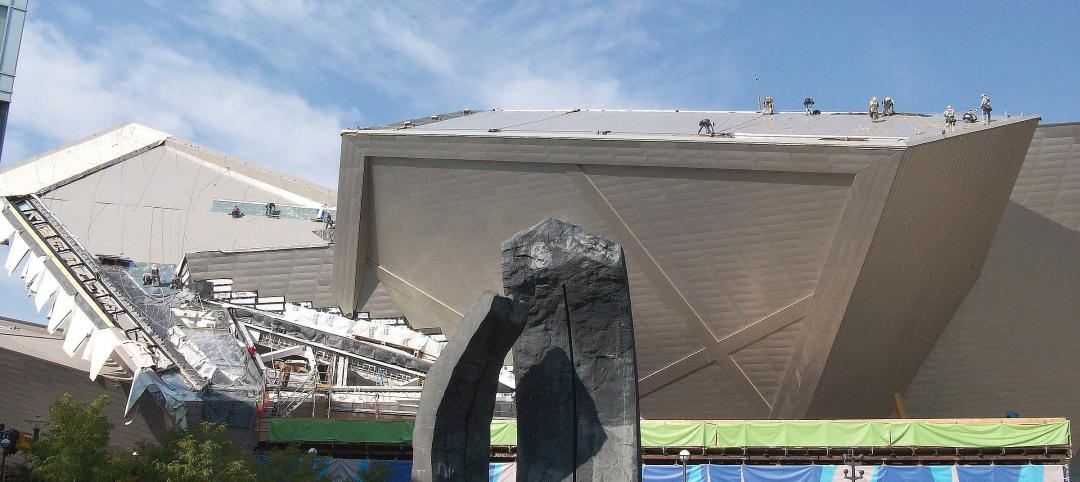Truth be told, for all parties involved in a construction project, it’s the bottom line that's the top concern. Owners and developers, architects and engineers, general contractors and subs, and consultants—every member of the team is ultimately—if not overtly—focused on the project’s profitability.
While this is the case, conventional approaches to cost estimating that many owners and developers have come to rely on may not always yield the best or expected results that benefit all parties. Budget shortfalls can often happen when they rely on data that is outdated, or when obtaining costs from a single source without enlisting a second pair of eyes to provide independent assessments and monitoring of budgets.
An alternative—working with an independent cost manager—may be a new concept for some owners, but holds far greater promise of saving them [and their team members] money and time. By treating the client’s investment as if it were their own, and actively serving as the client’s advocate, an independent cost manager adds quantifiable value to their work. Engaging a cost manager in the earliest stages of a project has a relatively modest impact on the process and timeline and can help to avoid snowballing setbacks as the project progresses.
Here’s a checklist of some key go/no-go indicators that cost managers use to put a project on the road to profitability:
- Scheduling. Hindsight may be 20/20, but in construction, foresight offers greater value. Cost managers use both historical and predictive data to determine the best time to break ground on a project and calculate its duration. Drawing on their knowledge of manufacturing and global logistics, cost managers can chart a reliable course for timely sourcing and procurement, resulting in an optimal schedule that appropriately captures project delivery risks.
- Market conditions. To make the most of investment dollars and establish a favorable financing environment, cost managers factor in real estate trends and cost variances for different locations. As part of the due diligence process in the early stages of a project, a cost manager can also advise clients on the programming of a building. Replacement cost estimates can reveal a building’s true value in the market, maximizing its selling value. This allows owners to see if the numbers work, and to make a go/no-go decision on the path forward.
- Procurement. A conscientious cost manager can advise their client about the advantages and disadvantages of a variety of alternative construction delivery systems, such as design-bid-build, design-assist, and design-build, helping them select the method that best aligns with their budget and schedule goals.
- Pricing. Lately, material, labor, and equipment costs have been exceptionally volatile. Unlike contractors and sub-contractors who draw solely on their past experience from the builder’s perspective to guesstimate these prices, cost managers minimize unexpected and unwelcome budget disruptions by using highly targeted, real-time data to accurately project future pricing trends. This forms the basis for creating a provisional budget for the various project-building components [i.e., structural system, exterior wall, lighting, and HVAC systems], an essential tool for developing and analyzing the project construction budget.
Watching for Red Flags
If a cost manager isn’t on board for the initial stages of the project, there are still opportunities to enlist their aid; in fact, there are critical situations when reaching out to an independent cost manger can mean the difference between a successful, profitable project and a resource-sapping undertaking. These three red-flag scenarios include:
- “Free” estimates. Often offered as an incentive for prospective clients by contractors, free cost estimates are frequently based on non-competitive data from a single source that may not reflect current dollar values or cost influencers, and therefore may not equate to a comprehensive construction cost. Third-party cost managers work only with fresh data—in many cases, proprietary—that accounts for current market conditions, is tailored to the needs of specific projects, and provides realistic cost information throughout the course of a project.
- Doubts from the design team. If the design team says the budget is inadequate, there is an opportunity to mitigate that before resorting to value engineering. Working directly with the design team, a cost manager can guide them through the process of identifying and selecting alternative solutions that won’t derail the design—or the budget.
- Rapid cost escalation in design-build projects. The efficiencies of the design-build delivery method are predicated on an accelerated schedule and a reduction in change orders. If there is a delay in any phase of the process, costs can quickly soar. A cost manager can step in and make new budget projections that can help reduce loss.
Once a cost manager has created the optimal scenario for the project, it’s a “Go” to the design phase. Having prepared cost estimates based on the schematic design documents, design development documents, and construction documents, the cost manager can provide guidance to the design team related to the cost impact of design decisions throughout the design process. Armed with this information, a realistic budget can be created, giving the design team a solid foundation on which to build, and minimizing budgetary surprises as the project moves into construction.
With construction costs typically making up about 70% of an owner’s budget in a project, there’s a lot at stake in a building project. When engaged at the outset of the job, a proactive cost manager will not just protect that investment, they will identify ways to increase the profit margins throughout the process. There’s little doubt that engaging a third-party cost manager adds a small cost up-front, but it will yield a larger payback; one that also pays it forward in terms of client service.
Related Stories
| Mar 11, 2011
Chicago office building will serve tenants and historic church
The Alter Group is partnering with White Oak Realty Partners to develop a 490,000-sf high-performance office building in Chicago’s West Loop. The tower will be located on land owned by Old St. Patrick’s Church (a neighborhood landmark that survived the Chicago Fire of 1871) that’s currently being used as a parking lot.
| Mar 11, 2011
Community sports center in Nashville features NCAA-grade training facility
A multisport community facility in Nashville featuring a training facility that will meet NCAA Division I standards is being constructed by St. Louis-based Clayco and Chicago-based Pinnacle.
| Mar 11, 2011
Slam dunk for the University of Nebraska’s basketball arena
The University of Nebraska men’s and women’s basketball programs will have a new home beginning in 2013. Designed by the DLR Group, the $344 million West Haymarket Civic Arena in Lincoln, Neb., will have 16,000 seats, suites, club amenities, loge, dedicated locker rooms, training rooms, and support space for game operations.
| Mar 10, 2011
How AEC Professionals Are Using Social Media
You like LinkedIn. You’re not too sure about blogs. For many AEC professionals, it’s still wait-and-see when it comes to social media.
| Mar 7, 2011
Sika Sarnafil announces 2010 roofing Contractor Project of the Year winners
Sika Sarnafil announced winners of its 2010 Contractor Project of the Year Competition. Twelve contractors were recognized for outstanding workmanship in completing a project using a Sika Sarnafil thermoplastic membrane for roofing or waterproofing applications. A winner and two finalists were chosen from each of four different categories: Low Slope, Steep Slope, Waterproofing and Sustainability.
| Mar 3, 2011
Webcor Builders and Shangri-La Construction form partnership
Webcor Builders and Shangri-La Construction announced today that the two general contractors have formed an exclusive partnership to pursue and provide general contracting and construction management services in select western states including California, Arizona, Nevada and Texas. The partnership, which will be named Webcor LA, will pursue construction projects across aviation, commercial real estate and tenant improvement, hospitality, institutional, healthcare, industrial, public works, and multi-family categories.
| Mar 2, 2011
Design professionals grow leery of green promises
Legal claims over sustainability promises vs. performance of certified green buildings are beginning to mount—and so are warnings to A/E/P and environmental consulting firms, according to a ZweigWhite report.
| Mar 2, 2011
How skyscrapers can save the city
Besides making cities more affordable and architecturally interesting, tall buildings are greener than sprawl, and they foster social capital and creativity. Yet some urban planners and preservationists seem to have a misplaced fear of heights that yields damaging restrictions on how tall a building can be. From New York to Paris to Mumbai, there’s a powerful case for building up, not out.
| Mar 1, 2011
How to make rentals more attractive as the American dream evolves, adapts
Roger K. Lewis, architect and professor emeritus of architecture at the University of Maryland, writes in the Washington Post about the rising market demand for rental housing and how Building Teams can make these properties a desirable choice for consumer, not just an economically prudent and necessary one.
| Feb 24, 2011
Lending revives stalled projects
An influx of fresh capital into U.S. commercial real estate is bringing some long-stalled development projects back to life and launching new construction of apartments, office buildings and shopping centers, according to a Wall Street Journal article.












